A Mushroom Dyer's Field Guide





For her pioneering work in using mushrooms for color.
Mushroom dyers everywhere will always remain in her debt.
To SUSAN HOPKINS
Friend, mycologist, and dyer extraordinaire.
You opened our eyes to a mycological dimension previously unknown to us.
Susan Hopkins' mushroom-dyed gnomes
Appendixes
Cortinarius semisanguineus with dyed tester strips
Susan Hopkins' mushroom-dyed gnomes
Arleen Rainis Bessette
Mushroom dye color ring
Crocheted hat made from mushroom-dyed yarn
Young stages of Hvvdnellunt pineticola
Parts of mushrooms
Basket of mushrooms
Three stages of Pholiota malicola and dye test results
Hoh Rain Forest
Tending the dye pot
Close-up of a sheep's face
Mushroom-dyed silk scarf
Skeins of unmordanted and mordanted yarn
Color variation with neutral vs. alkaline dye baths
Washing the dyed yarn
Preparing the dye bath
Dye results from successive afterhaths
Checking for color
Swinging the skeins
Skeins of yarn drying on rack
Gymnopilus luteofolius
Sarcoscypha austriaca
Examples of mushroom-dyed silk
Example of varietal variation dye results
Vest knitted with mushroom dyed yarn
Display at the 8th International Fungi & Fibre Symposium
Arleen Rainis Bessette
 HERE HAS BEEN an increased awareness of mushrooms over the past decade, along with a parallel growing interest in "getting back to basics." Recycling, home gardening, wild food gathering, wine and beer making, medicinal uses of plants, and the use of natural fibers for clothing and decoration are but a few areas indicative of this trend. Environmental concerns and a heightened sense of appreciation for the beauty and fragility of this planet with which we coexist may account, in part, for this focus.
HERE HAS BEEN an increased awareness of mushrooms over the past decade, along with a parallel growing interest in "getting back to basics." Recycling, home gardening, wild food gathering, wine and beer making, medicinal uses of plants, and the use of natural fibers for clothing and decoration are but a few areas indicative of this trend. Environmental concerns and a heightened sense of appreciation for the beauty and fragility of this planet with which we coexist may account, in part, for this focus.
My own memory of first collecting mushrooms goes back more than forty years. My grandparents and I collected edible species for the table, although my memory is not of the taste of dishes prepared from the finds of those forays. Rather, my memory is of holding up the brilliant red-capped russulas and the golden and brown-toned boletes for my grandmother's approval. The color and feel of the mushrooms is what remained mind-fast, as memory. Some years later I learned to knit, and discovered the same love of color and texture handling wool that I experienced while collecting mushrooms. This hand-hunger, this need to know the world by touch and feel while simultaneously being transported by the flash and spark of color and form, has been a part of me ever since.
With a background in both science and psychology, I have been fortunate in being able to pursue careers that include mycology and photography in addition to my study of the human psyche. I remain entranced by those elements of the world that engage, delight, and surprise. When a friend introduced me to the concept of dyeing wool with mushrooms, my boundaries of personal history collided and merged with my present-day near obsession with collecting, photographing, writing about, and eating mushrooms. Initially a generational link due to their food value, mushrooms have now gained a unique status as environmentally safe producers of colorfast dyes. Every color is obtainable, from shades of brown and gold to bright reds, oranges, blues, and purples. The process is magical, alchemical, sometimes startling. Imagine the surprise when a nondescript, little brown mushroom transforms a skein of yarn into all the shades of a summer sunset!
Now as I walk through the forests and step deeply into the velvet-cushion mosses, I see so much more than photographic opportunities or tasty dishes waiting to be savored. I gaze down upon the splendor of color and form, awestruck, grateful, mesmerized by the rainbow beneath my feet.
Arleen Rainis Bessette
Color ring showing some of the colors obtained dyeing with mushrooms

 T IS WITH considerable pleasure that we acknowledge the following individuals who have helped us in various ways with this work. For sharing technical data, mycological notes, and preserved specimens, and for assisting in the identification of species, we are grateful to Joseph Ammirati, Tim Baroni, Ernst Both, Phyllis Cole, Dail Dunaway, Ray Fatto, the late Greg Ferguson, Robert Gilbertson, Susan Hopkins, Don Johnston, Steve Trudell, and Nathan Wilson. Valuable collections of fresh mushrooms that we studied and photographed were also contributed by Billie and Ernst Both, Dail Dunaway, the late Greg Ferguson, Jessica and David Harris, Susan Hopkins, Donna Mitchell, Cindy and Peter Molesky, Bill Roody, Nathan Wilson, and Lee Yamada. We appreciate the kindness and hospitality of Lisa Bauer, Billie and Ernst Both, Margaret and Philip Carpenter, Dail and Tina Dunaway, Karen Fogler, Susan Hopkins, and Anna Moore who invited us into their homes and shared their favorite collecting sites with us.
T IS WITH considerable pleasure that we acknowledge the following individuals who have helped us in various ways with this work. For sharing technical data, mycological notes, and preserved specimens, and for assisting in the identification of species, we are grateful to Joseph Ammirati, Tim Baroni, Ernst Both, Phyllis Cole, Dail Dunaway, Ray Fatto, the late Greg Ferguson, Robert Gilbertson, Susan Hopkins, Don Johnston, Steve Trudell, and Nathan Wilson. Valuable collections of fresh mushrooms that we studied and photographed were also contributed by Billie and Ernst Both, Dail Dunaway, the late Greg Ferguson, Jessica and David Harris, Susan Hopkins, Donna Mitchell, Cindy and Peter Molesky, Bill Roody, Nathan Wilson, and Lee Yamada. We appreciate the kindness and hospitality of Lisa Bauer, Billie and Ernst Both, Margaret and Philip Carpenter, Dail and Tina Dunaway, Karen Fogler, Susan Hopkins, and Anna Moore who invited us into their homes and shared their favorite collecting sites with us.
For their photographic and artistic contributions, which greatly enhanced the beauty and utility of this book, we are indebted to Catherine Ardrey, Dail Dunaway, Kenneth M. Evenson, Kenneth J. Harrison, Emily Johnson, Andrew Methven, Orson K. Miller, Jr., Sam Norris, Bill Roody, Walt Sturgeon, Walt Sundberg, and Steve Trudell.
We thank Mattias Andersson, Myra Beebee, Patricia Brannen, Jean Mounter, Samantha Noti, Patricia Olson, Trine Partner, and Margaret Trussell for graciously allowing photographs of themselves to be included in this work.

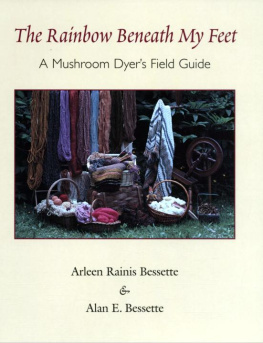
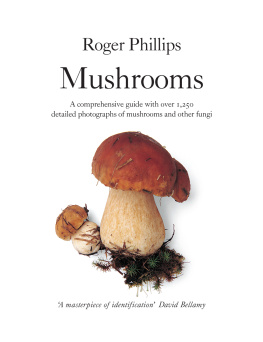
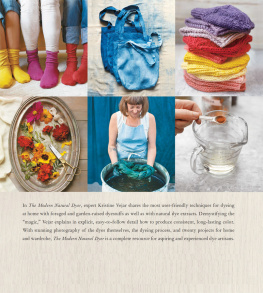
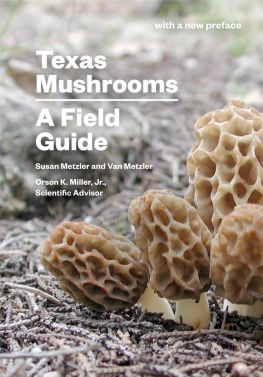

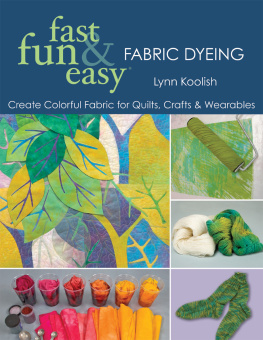

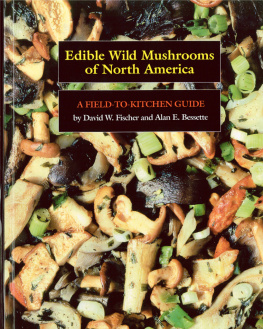
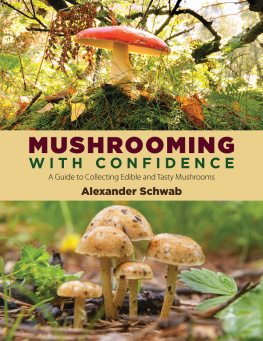





 HERE HAS BEEN an increased awareness of mushrooms over the past decade, along with a parallel growing interest in "getting back to basics." Recycling, home gardening, wild food gathering, wine and beer making, medicinal uses of plants, and the use of natural fibers for clothing and decoration are but a few areas indicative of this trend. Environmental concerns and a heightened sense of appreciation for the beauty and fragility of this planet with which we coexist may account, in part, for this focus.
HERE HAS BEEN an increased awareness of mushrooms over the past decade, along with a parallel growing interest in "getting back to basics." Recycling, home gardening, wild food gathering, wine and beer making, medicinal uses of plants, and the use of natural fibers for clothing and decoration are but a few areas indicative of this trend. Environmental concerns and a heightened sense of appreciation for the beauty and fragility of this planet with which we coexist may account, in part, for this focus.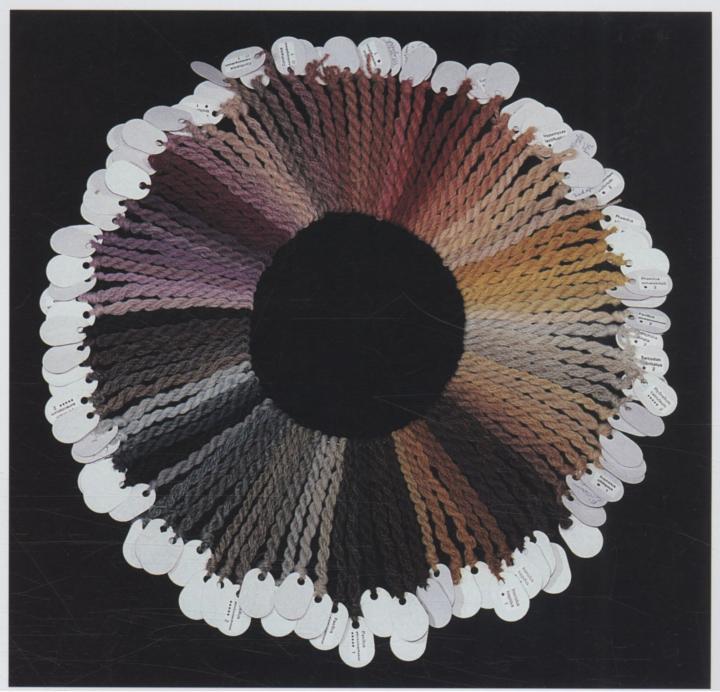
 T IS WITH considerable pleasure that we acknowledge the following individuals who have helped us in various ways with this work. For sharing technical data, mycological notes, and preserved specimens, and for assisting in the identification of species, we are grateful to Joseph Ammirati, Tim Baroni, Ernst Both, Phyllis Cole, Dail Dunaway, Ray Fatto, the late Greg Ferguson, Robert Gilbertson, Susan Hopkins, Don Johnston, Steve Trudell, and Nathan Wilson. Valuable collections of fresh mushrooms that we studied and photographed were also contributed by Billie and Ernst Both, Dail Dunaway, the late Greg Ferguson, Jessica and David Harris, Susan Hopkins, Donna Mitchell, Cindy and Peter Molesky, Bill Roody, Nathan Wilson, and Lee Yamada. We appreciate the kindness and hospitality of Lisa Bauer, Billie and Ernst Both, Margaret and Philip Carpenter, Dail and Tina Dunaway, Karen Fogler, Susan Hopkins, and Anna Moore who invited us into their homes and shared their favorite collecting sites with us.
T IS WITH considerable pleasure that we acknowledge the following individuals who have helped us in various ways with this work. For sharing technical data, mycological notes, and preserved specimens, and for assisting in the identification of species, we are grateful to Joseph Ammirati, Tim Baroni, Ernst Both, Phyllis Cole, Dail Dunaway, Ray Fatto, the late Greg Ferguson, Robert Gilbertson, Susan Hopkins, Don Johnston, Steve Trudell, and Nathan Wilson. Valuable collections of fresh mushrooms that we studied and photographed were also contributed by Billie and Ernst Both, Dail Dunaway, the late Greg Ferguson, Jessica and David Harris, Susan Hopkins, Donna Mitchell, Cindy and Peter Molesky, Bill Roody, Nathan Wilson, and Lee Yamada. We appreciate the kindness and hospitality of Lisa Bauer, Billie and Ernst Both, Margaret and Philip Carpenter, Dail and Tina Dunaway, Karen Fogler, Susan Hopkins, and Anna Moore who invited us into their homes and shared their favorite collecting sites with us.